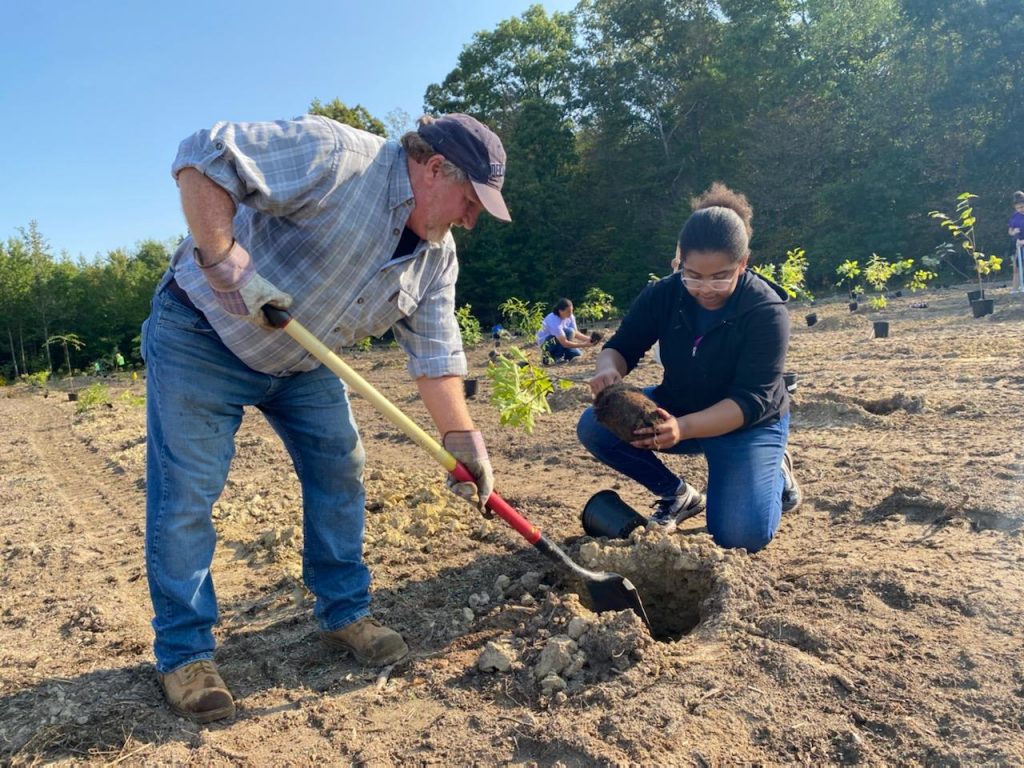TOWNSEND, Del. (September 21, 2022) – On September 17, over 100 volunteers planted 2,075 trees at the Blackbird State Forest for the Harriet Tubman Bicentennial Tree Planting. This initiative will provide scenic beauty, enhance wildlife habitat, fight invasive species, and improve water quality in the critical Chesapeake Bay Watershed. This tree planting was part of a broader program to commemorate the 200th birthday year of Harriet Tubman in 1822 and part of International Underground Railroad Month.
“This tree planting event along with the guided hikes (held separately), generated a lot of interest and positive feedback for more programming like this from Delaware citizens. We were fortunate enough to partner in these events with a cultural interpretive guide Dionne Patterson (UGR3day Underground Railroad Experiences Inc.), DelDOT Byways Program, and the Underground Railroad Coalition of Delaware,” said Delaware Forest Service’s Urban and Community Forestry Coordinator Kesha Braunskill. “Our forestry staff did an outstanding job in preparing the site for the planting to take place. And volunteers from all over the state did an awesome job getting all the trees planted in under three hours. These planting events are great for community involvement, and everyone gets to see the fruits of their labor for years to come as they come back to see the forest they helped create.”
The planting project allowed the Delaware Forest Service to continue its goal of increasing tree canopy, as well as increasing the community’s knowledge, understanding, and appreciation of forests and forest management. Volunteers who assisted included teachers and students from various school groups, honor society students, Cub Scout and Boy Scout troops, and volunteers from Delaware’s Air Force Crew.
Blackbird State Forest covers nearly 6,000 acres in southern New Castle County and is a stop on the historic Harriet Tubman Underground Railroad Byway. The project was funded by the U.S. Forest Service and its Chesapeake Bay Program and the Delaware Forest Service and its Urban and Community Program.
To find out how to get involved in future tree plantings or other tree-inspired programs, visit https://de.gov/treeevents.
More photographs are available on Flickr, https://flic.kr/s/aHBqjA7XEp